13 Essential Things You Have to Know About Your Green Smoothies
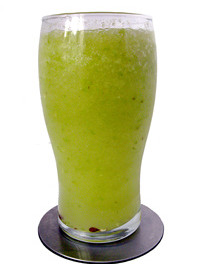
In this post I will share some important tips on preparing vegetable smoothies. You might find them useful if you want to get the maximum health benefits from your green beverages, and also if you want to avoid a number of potential health problems.
If you’ve been following this blog in the past, you know that as of recently I don’t recommend fruit-based drinks as a healthy option. Sure, they typically taste great, but sadly, they are not as healthful as many people use to think. Especially you will find them problematic if you want to lose weight, or if you drink them to improve your health.
The reason is that fruit smoothies are usually full of fructose (the natural fruit sugar), and if you are smart, fructose is the kind of sugar you would want to avoid as much as possible.
Table of Contents
- 1 But how about some delicious green smoothies?
- 2 1. Use Fresh Ingredients
- 3 2. Go Organic
- 4 3. Avoid GMO Produce
- 5 4. Buy at Farmers’ Markets
- 6 5. Connect to Organic Farmers & Growers
- 7 6. Get Over Your Desire For Perfect Produce
- 8 7. Prepare the Ingredients Before Blending
- 9 8. Use a Liquid Base
- 10 9. Invest in a High Power Blender
- 11 10. Drink the Smoothie Right Away
- 12 11. Beware of the Oxalates
- 13 12. Serve With a Chunk of Healthy Fat
- 14 13. If You Have to Add Fruits
- 15 The bottom line
- 16 Related Posts
But how about some delicious green smoothies?
As their name suggests, green smoothie blends are based on vegetables, and what’s more important they are health packed, nutritious, and can be very delicious. Apart from the problem with high oxalate levels in some leafy veggies (see tip number 11.) and if put some effort in selecting the best possible produce, they virtually come without any adverse effects.
So, without further ado, here are some tips to get you going with your green smoothies:
1. Use Fresh Ingredients
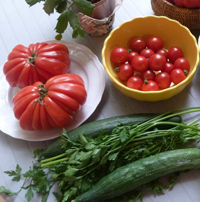 This one is no brainer. Do your best to buy and use only fresh ingredients, ones that are being harvested as close to the time of purchase as possible. Veggies lose a good deal of their healthful minerals and vitamins as they become less fresh, or as they travel great distances.
This one is no brainer. Do your best to buy and use only fresh ingredients, ones that are being harvested as close to the time of purchase as possible. Veggies lose a good deal of their healthful minerals and vitamins as they become less fresh, or as they travel great distances.
2. Go Organic
 What is more important, go above and beyond to find organic vegetables. Not because they contain more nutrients (although they very well might) but because they don’t contain chemicals, like fertilizers, pesticides, or herbicides.
What is more important, go above and beyond to find organic vegetables. Not because they contain more nutrients (although they very well might) but because they don’t contain chemicals, like fertilizers, pesticides, or herbicides.
3. Avoid GMO Produce
If you buy organic veggies, you will naturally avoid GMO, but I wanted to stress this one because it is so important. So avoid GMO at all cost. Even if you don’t buy organic, try to avoid GMO foods, as they are the worst alternative for your health when we compare them to any non-GMO produce.
For example, the herbicide glyphosate is a chemical substance proven deadly for human cells. Glyphosate is the key ingredient in Monsanto’s Roundup. It is heavily used on GMO crops, so if you eat a lot of GMO foods, it accumulates in your body and causes a serious damage there. You would be wise to avoid these veggies as much as possible.
4. Buy at Farmers’ Markets
 To accomplish at least some of the above aims, whenever you can, buy from your local farmers’ market. Also, consider using small local growers to obtain the healthiest and best tasting choice of veggies.
To accomplish at least some of the above aims, whenever you can, buy from your local farmers’ market. Also, consider using small local growers to obtain the healthiest and best tasting choice of veggies.
Be aware that markets change, locations shift, and days fluctuate. Also, if market dates fall on holidays, they are likely to have different schedules or be closed altogether. You can search the internet to find your local markets, or browse specialized directories like this one for Southern California.
5. Connect to Organic Farmers & Growers
Don’t just buy your food. Engage in conversation with the farmers and growers you are buying your food from. You will be surprised at what you will learn, for example about the process of production and/or quality of the food you are buying.
You will also find out that some sellers are quite knowledgeable and very educated about their produce, about organic foods in general, or about the health benefits of their produce.
6. Get Over Your Desire For Perfect Produce
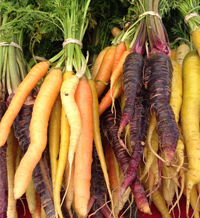 Don’t look for supermarket perfect produce. It is ridiculous how many people make this mistake. In this case, what’s pleasing to the eye, doesn’t necessarily mean that it will please your body.
Don’t look for supermarket perfect produce. It is ridiculous how many people make this mistake. In this case, what’s pleasing to the eye, doesn’t necessarily mean that it will please your body.
Some estimates show that as much as 20 to 40 percent of all foods go uneaten because they don’t meet our strict cosmetic standards. The sad reality is that vegetables considered not perfect enough or ugly for sale are destined for waste.
But the truth is, the healthier, organic veggies usually look smaller and less perfect. They often come in variable sizes and may have odd shapes, smaller sizes, and varying colors.
So, don’t be fooled by their look. It the Nature’s way. I guarantee you that they are much, much healthier.
7. Prepare the Ingredients Before Blending
If you are wondering what parts of your veggies to use for blending, a good rule is to use those parts that you would eat without blending anyway. For example, you should probably leave out the super bitter parts, or the ones you have difficulties biting into.
Always remove avocado peel, mango and date pit, apple seeds, citrus, pineapple skin and leaves… Here is a reasonable set of rules as to what to remove and what to keep.
Do cut your ingredients before making green smoothies. Most ingredients should be cut into smaller chunks by using a sharp knife. Most veggies benefit from being cut in cubes of approximately one inch size. You can shred the greens as well.
8. Use a Liquid Base
 The base is the foundation to all great smoothies. When blending veggies, you would need more liquid than when preparing fruit smoothies. Typically you would need about 8 to 12 ounces.
The base is the foundation to all great smoothies. When blending veggies, you would need more liquid than when preparing fruit smoothies. Typically you would need about 8 to 12 ounces.
If you want to use water, you have two options here. Either use filtered (purified) water by reverse osmosis, or purchase good quality spring water. Avoid fluoridated tap water at all cost, as it is absolutely bad for your health. If you want to use something other than pure water, you may want to try coconut water, yogurt, almond milk, or something along the line. But, be cautious! Make sure these liquids don’t contain sugar, sweeteners, artificial flavorings, or any other type of harmful additives. I would also stay away from soy based drinks, or fruit juices.
9. Invest in a High Power Blender
Invest in a high-power smoothie blender, especially if you intend to make a lot of smoothies. This type of blender will also make the final product much quicker, thereby preventing unnecessary oxidation. Oxidation is what potentially ruins the nutritious content of your drinks. My recommendation is the Vitamix blender. It is like Rolls-Royce of the world of blenders. It will deliver smooth and rich green smoothies day in, day out. It has been built to last, and the best indication for that is its 7 year warranty. Vitamix is not cheap either, but I believe it is worth every cent you pay for it.
10. Drink the Smoothie Right Away
 10 Your green smoothie should be consumed right after making it. That way you will get most of the benefits. Again, the reason is the possible oxidation and loss of nutrients. However, if you prepare more than what you want to drink right away, you can store the extra smoothie in the fridge, typically for up to 48 hours. Just keep it in an air-tight jug while in the fridge. Don’t be surprised if the texture, color, or composition of your green smoothie change while it sits in your fridge for too long. So, finish it as soon as possible. If not, your body will sill reap the benefits of even if it is not taken right away.
10 Your green smoothie should be consumed right after making it. That way you will get most of the benefits. Again, the reason is the possible oxidation and loss of nutrients. However, if you prepare more than what you want to drink right away, you can store the extra smoothie in the fridge, typically for up to 48 hours. Just keep it in an air-tight jug while in the fridge. Don’t be surprised if the texture, color, or composition of your green smoothie change while it sits in your fridge for too long. So, finish it as soon as possible. If not, your body will sill reap the benefits of even if it is not taken right away.
Another thing you could do if you decide to store your smoothie for later use is adding a small amount of lemon juice to it. This will help preserve and keep the smoothie as fresh as possible.
11. Beware of the Oxalates
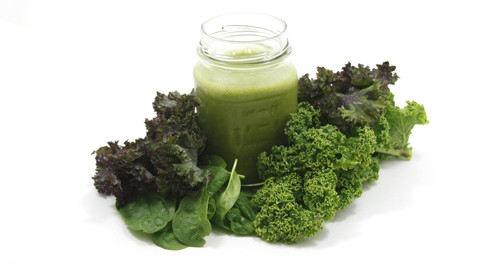
As a rule, leafy raw green vegetables have elevated oxalate levels. In time, the oxalates can pose serious health problems, especially if you belong to the 20 percent of population that is genetically predisposed to oxalate stones production. Also, if you struggle with kidney stones, if you suffer from fungal infections due to antibiotic use or have a gut imbalance, drinking green smoothies might not be the best way to improve your health. It is also good to know that some greens, like wheatgrass, cabbage, kale, or lettuce are low in oxalates. Here is a list of some other high oxalate foods to be avoided.
12. Serve With a Chunk of Healthy Fat
 Serve your green smoothies with a chunk of healthy saturated fats, for example grass fed butter, purified butter (ghee), coconut oil, or MCT oil. This kind of fat will help increase the absorption of minerals and nutrients from the smoothie. Despite what you might have been told by the mainstream media and the so-called nutrition experts, stay away from the GMO vegetable oils, synthesized oils like margarine, or most of the vegetable oils (except coconut oil, moringa oil, avocado oil, and extra virgin olive oil – served cold).
Serve your green smoothies with a chunk of healthy saturated fats, for example grass fed butter, purified butter (ghee), coconut oil, or MCT oil. This kind of fat will help increase the absorption of minerals and nutrients from the smoothie. Despite what you might have been told by the mainstream media and the so-called nutrition experts, stay away from the GMO vegetable oils, synthesized oils like margarine, or most of the vegetable oils (except coconut oil, moringa oil, avocado oil, and extra virgin olive oil – served cold).
13. If You Have to Add Fruits
If you are going to add Fruits, favor fruits containing low fructose, like lemons and berries. Avoid using high fructose containing fruits, like watermelon and apples. And keep the fruit consumption low, not more than 1 to 2 servings per day. Other low fructose fruits include blackberries, cranberries, lime, raspberries, coconut, blueberries, and avocado.
The bottom line
Raw leafy greens are certainly among the healthiest foods you can consume. But, if you have problems with oxalic acid, you should avoid green veggies with high oxalate levels, such as spinach, and reduce the frequency of preparing green smoothies. With the presented tips and the several precautions mentioned in this article, you should be fine.
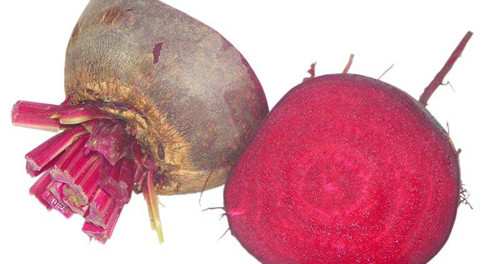
It is important to pay attention to the amount of natural sugars present in the fruits, and to some extent also in the vegetables, like beetroot, or carrots. If you blend them in large quantities, the excess sugar will hit your bloodstream quicker, and cause a cascade of problems in your body.
To your health!

When I first started out making green smoothies they were anything but green since I piled on a lot of fruits. After checking some recipes and doing some research I started incorporating more green. Yeah, it takes some time until you get used to the taste – let’s be honest, some are pretty gruesome – but now I manage to drink it without feeling like puking. I always use organic and in season fruits and veggies and yes, Vitamix is king, I’m not going back to my Philips.
Hi. Yes, many of them taste really bad, especially when you first prepare them. In time, your sense of taste will improve dramatically, as you start to introduce real whole foods as opposed to processed sugar rich foods. Thanks for taking the time to comment.
Great tips! I have a green juice once from a yoga teacher and it was an interesting taste but it really perked me up. I feel these are best served from fresh items like you mentioned. I feel like the powder supplements are fine but nothing compared to the real deal. Great information 🙂